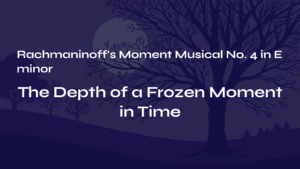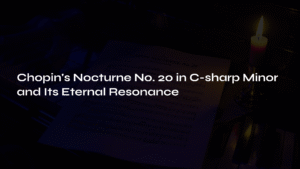Table of Contents
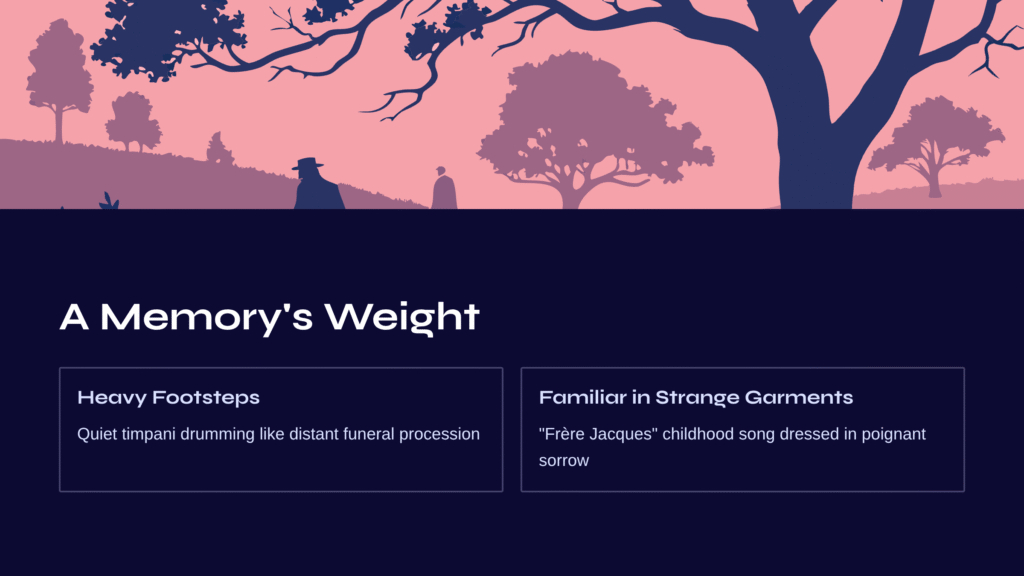
A Memory’s Weight, Those Heavy Footsteps
Some music places a heavy stone in your chest from the very first moment you hear it. Mahler’s Symphony No. 1, 3rd Movement is exactly that kind of piece. Beginning with the quiet drumming of timpani, this music slowly weighs down our hearts like the distant sound of funeral procession footsteps approaching from afar.
Yet something feels strange. Though it’s clearly sorrowful music, familiar melodies emerge throughout. “Frère Jacques, are you sleeping?” Who could have imagined that this childhood song we all once sang would appear dressed in such poignant and heavy garments?
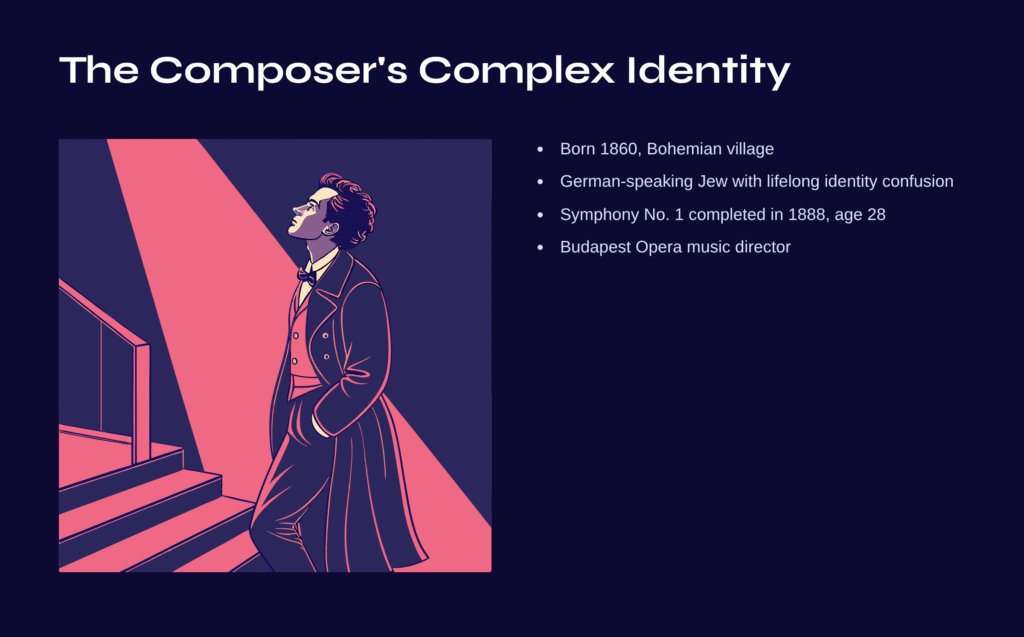
The Complex Inner Landscape of a Genius Composer
Gustav Mahler was born in 1860 in a small Bohemian village. As a German-speaking Jew, he endured lifelong identity confusion. He described himself as “a Czech in Austria, a Jew in the Czech lands.” This complex identity permeates every corner of his music.
Symphony No. 1 was completed in 1888 when Mahler was 28 years old. At the time, he was building his reputation as a conductor while serving as music director of the Budapest Opera, but he had yet to gain recognition as a composer. This symphony was both his first symphonic work and an ambitious piece that fully revealed his musical worldview.
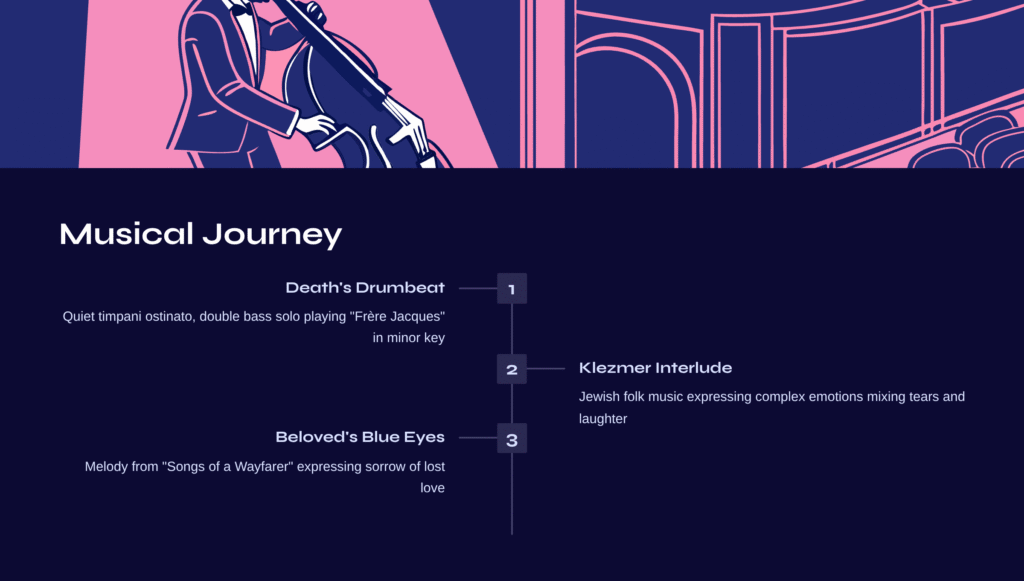
Different Stories from Each Section
The Beginning: Death’s Drumbeat and the Lonely Bass
The 3rd movement opens with a quiet timpani ostinato. Monotonous and heavy, like the distant drumbeat of death itself. Then enters the double bass solo. This was an extremely innovative approach for its time. Having the orchestra’s lowest and heaviest instrument perform a melody alone was virtually unprecedented.
The melody this bass performs is none other than “Frère Jacques” or “Bruder Martin.” But this isn’t the bright, cheerful tune we know. It has been completely transformed from major to minor, from fast tempo to slow. Like a fairy tale character who has grown up to understand the weight of reality.
The Middle: Klezmer’s Tears and Laughter
As the movement progresses, Mahler inserts another musical element: klezmer music. Klezmer is the traditional folk music of Eastern European Jews, typically played at weddings and festivals. But here, klezmer expresses not festive joy but complex emotions mixing tears and laughter.
This connects to Mahler’s own Jewish heritage. Within Vienna’s anti-Semitic atmosphere, Mahler embedded his roots in his music while simultaneously expressing the alienation and irony contained within that identity.
The Climax: Recollections of “My Beloved’s Blue Eyes”
In the movement’s middle section appears a melody from Mahler’s song cycle “Songs of a Wayfarer”—specifically “The Two Blue Eyes of My Beloved.” This melody, which sings of the sorrow of losing a loved one, takes on even deeper meaning within the context of a funeral march. Like beautiful memories of the past recalled in the face of death.
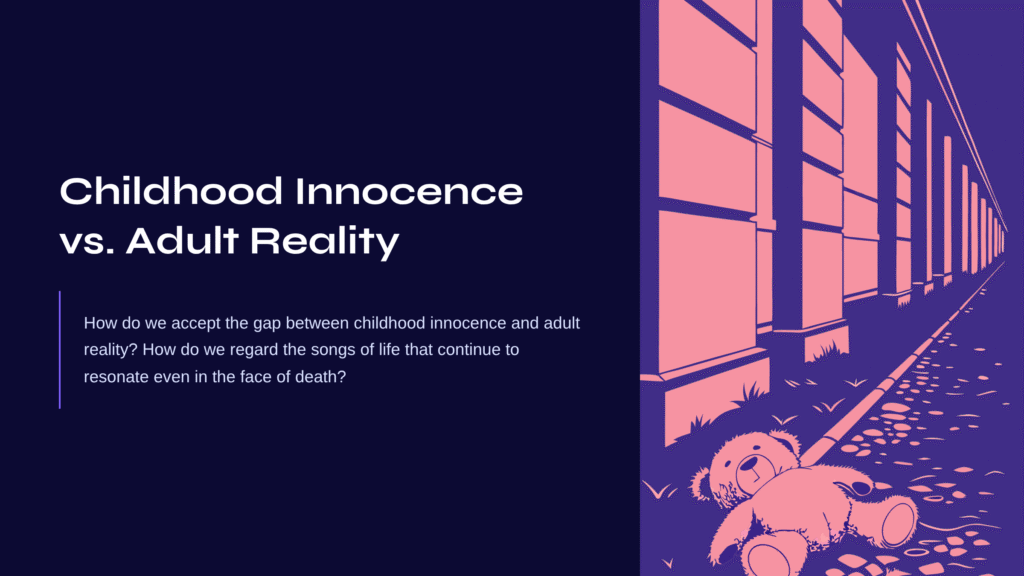
What I Feel: Childhood Innocence and Adult Reality
Each time I listen to this music, I’m enveloped by strange emotions. The bewilderment when a childhood song I once sang carelessly appears dressed in such profound sorrow. And simultaneously, the odd sense of comfort I feel.
Mahler asks us: How do we accept the gap between childhood innocence and adult reality? How do we regard the songs of life that continue to resonate even in the face of death?
The most striking aspect of this movement is precisely this irony. The secular music that continues to play even in sorrowful situations, the various aspects of life unfolding behind death’s procession. Through this, Mahler shows us the complexity of reality where life and death coexist.
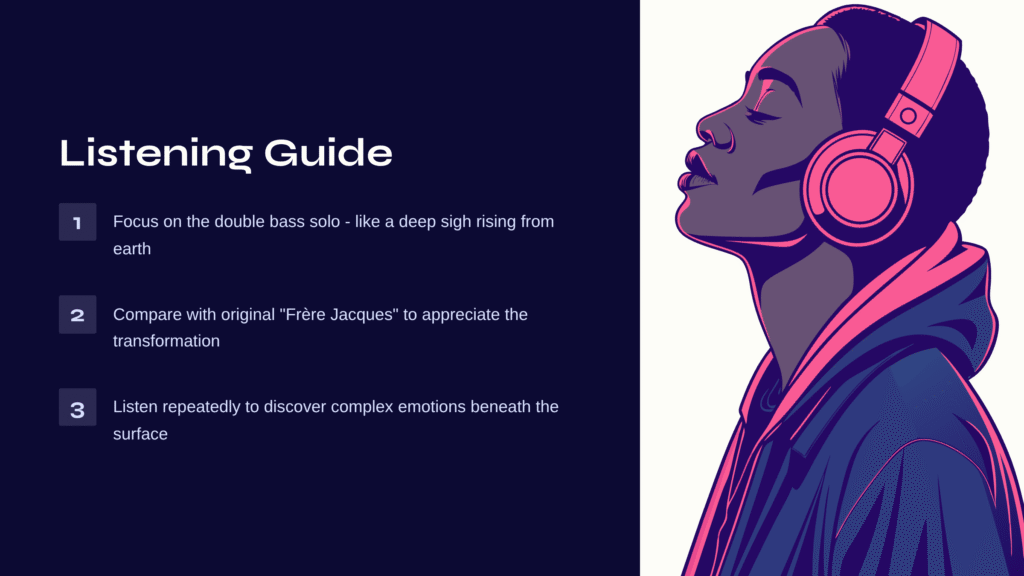
Small Tips for Deeper Listening
There are several points to focus on when listening to this piece.
First, pay attention to the double bass solo section. This heavy melody resonating from the orchestra’s lowest register sets the entire movement’s atmosphere. Like a deep sigh rising from the earth itself.
Second, it’s helpful to listen to the original “Frère Jacques” melody beforehand. Comparing the bright, cheerful original with Mahler’s version reveals just how dramatic a transformation the composer achieved.
Third, this movement reveals new emotions with each repeated listening. What initially sounds like simply sad music gradually reveals the complex and subtle emotions contained within.
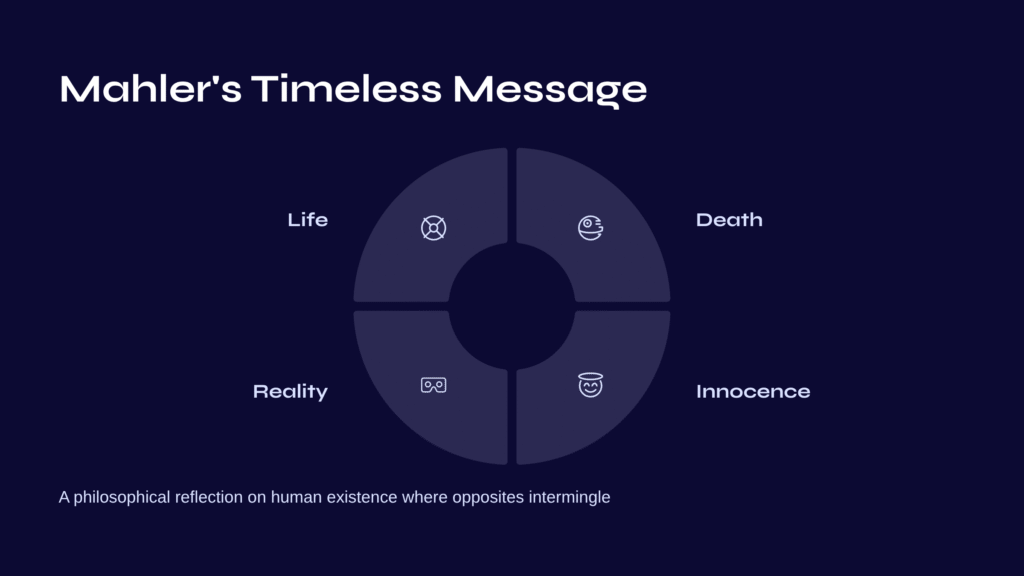
Mahler’s Timeless Message
Mahler’s Symphony No. 1, 3rd Movement is not merely a funeral march. It is a philosophical reflection expressing through music the complexity of human existence—where life and death, innocence and reality, joy and sorrow intermingle.
The reason this music continues to resonate deeply with us today is that the emotions Mahler captured possess a universality that transcends time. Everyone longs for childhood innocence, feels the weight of reality, and contemplates the meaning of life and death. Mahler comforts exactly these feelings of ours through his music.
Some music contains truths that remain unchanged despite the passage of time. Mahler’s movement is precisely such music. At the point where irony and sorrow meet, embraced by warm understanding, we finally come to realize the true meaning of humanity.

Next Destination: The Warm Bells of Provence
After completing Mahler’s deep and complex emotional journey, how about departing for an entirely different landscape? Georges Bizet’s “L’Arlésienne Suite No. 1: Carillon” is a work that captures the warm sunshine and gentle bell sounds of the Provence region.
In contrast to Mahler’s heavy philosophical reflection, Bizet’s Carillon sings of the pastoral beauty of southern France and the simple joys of daily life. The melody imitating church bells harmonizes with the lyrical melodies of Provençal folk songs, painting what seems like a peaceful afternoon in a small village under the blue Mediterranean sky.
If you listen to Bizet’s bright and warm music after Mahler’s deep inner exploration, you’ll newly appreciate how broad and rich the emotional spectrum that classical music can encompass truly is.


